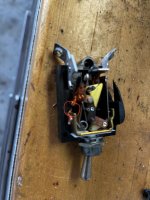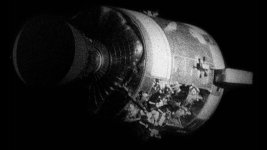My combination switch/CB failed in flight. Lost both radios, TXP and Audio panel.
I believe the failure is due to fatigue. You can spot the broken wire in the pic. I estimate that the switch has had a min. of 2000 cycles. Fortunetly, I had a spare and the replacement took 45 min.
Perhaps a parallel master switch is in order.
Update:
The switch/CB has been in service for 14 years. I estimated the cycles based on 1700 flight hours. Thank you all for advice and shared experiences.
I believe the failure is due to fatigue. You can spot the broken wire in the pic. I estimate that the switch has had a min. of 2000 cycles. Fortunetly, I had a spare and the replacement took 45 min.
Perhaps a parallel master switch is in order.
Update:
The switch/CB has been in service for 14 years. I estimated the cycles based on 1700 flight hours. Thank you all for advice and shared experiences.
Attachments
Last edited:






